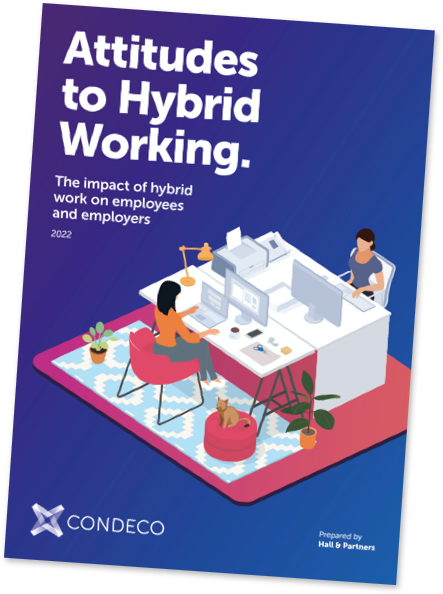
Large enterprises face mounting challenges in attracting and retaining skilled IT talent. The convergence of a global talent shortage, rapidly evolving workforce expectations, and technological innovation has intensified the need for organizations to rethink traditional workplace models. For IT professionals, whose roles often require creativity, problem-solving, and a keen ability to adapt, flexibility is no longer a perk — it’s a necessity.
This article explores why flexible work environments are critical to overcoming IT talent shortages and provides practical insights for workplace leaders on how to foster a culture that not only attracts top talent but also supports long-term success. By integrating strategies such as effective change management, robust knowledge transfer mechanisms, and employee-centric policies, organizations can create an environment that thrives in the digital age.
The IT talent dilemma: Why the stakes are higher than ever
Even before the pandemic reshaped the workforce, the IT sector faced chronic talent shortages. In 2019, the U.S. alone had over 920,000 unfilled software engineering positions, and this number was projected to reach 1.2 million by 2026. Globally, a 2020 World Economic Forum report revealed that 54% of all employees will need significant reskilling by 2025 to adapt to technological changes.
However, the pandemic accelerated workforce shifts, leading to what many have called “The Great Resignation.” More than ever, IT professionals are reevaluating their priorities, seeking roles that offer flexibility, autonomy, and meaningful work. Studies indicate that up to 40% of tech professionals are considering changing jobs. This unprecedented fluidity in the job market underscores the importance of reimagining workplace strategies to meet the expectations of today’s talent.
Flexibility as a strategic advantage
For IT professionals, flexibility goes beyond remote work. It encompasses the ability to design their schedules, collaborate asynchronously, and access tools and resources that empower them to do their best work. Flexibility fosters creativity, reduces burnout, and enables employees to balance their personal and professional lives effectively.
But flexible work is also a strategic imperative for organizations. According to research by Gallup, businesses with highly engaged employees experience 21% higher profitability, 17% greater productivity, and 41% lower absenteeism. When employees feel valued and supported, they’re more likely to bring their best selves to work — a critical factor in a field as innovation-driven as IT.
Building a flexible work culture
Creating a flexible work culture requires more than implementing remote or hybrid work policies. It involves a shift in mindset, a reevaluation of workplace norms, and a commitment to prioritizing employee experience. Here’s how workplace leaders can create a more attractive environment for IT talent:
-
Rethink leadership and management practices
Traditional leadership models often emphasize visibility and control — two elements that can hinder flexibility. Instead, leaders should focus on fostering trust, promoting autonomy, and empowering employees to take ownership of their work.
- Promote trust through transparency: When leaders communicate openly about organizational goals, challenges, and expectations, employees are more likely to feel aligned and engaged.
- Encourage autonomy: Trust employees to manage their own time and deliver results without micromanagement. For IT professionals, this autonomy can be a significant motivator.
-
Focus on employee-centric technology
For flexibility to succeed, employees need access to tools that support seamless collaboration and productivity. From project management platforms like Asana and Trello to virtual meeting tools like Zoom and Microsoft Teams, technology plays a critical role in bridging the gap between in-office and remote teams.
Moreover, implementing workplace management systems that allow employees to book office spaces, access resources, and manage schedules can streamline operations and reduce friction. IT teams, in particular, benefit from platforms that enable real-time problem-solving and knowledge sharing.
-
Redefine performance metrics
Traditional performance metrics — such as hours worked or physical presence — are outdated in a flexible work environment. Instead, organizations should prioritize outcome-based metrics that evaluate employees on their contributions and results.
For example, rather than tracking the number of hours a software developer spends coding, focus on the quality of their code, the efficiency of their solutions, and their ability to meet deadlines. Outcome-based metrics not only align with the needs of IT professionals but also promote a results-oriented culture.
-
Invest in professional development
The IT field is inherently dynamic, with new tools, frameworks, and technologies emerging at an unprecedented pace. To attract and retain top talent, organizations must invest in continuous learning opportunities.
- Offer certifications, online courses, and workshops to help employees stay ahead of industry trends.
- Create mentorship programs that connect junior employees with experienced leaders, fostering knowledge transfer and career growth.
When employees feel supported in their professional development, they’re more likely to stay loyal to the organization.
Change management: Paving the way for flexibility
Transitioning to a flexible work culture is not without challenges. It requires thoughtful change management to address potential resistance, align stakeholders, and ensure a smooth implementation. Change management in this context involves:
- Engaging leadership: Leaders must be actively involved in championing flexibility. Their buy-in is critical to setting the tone for the rest of the organization.
- Listening to employees: Conduct surveys and focus groups to understand employee concerns, preferences, and suggestions. This feedback can inform the design of flexible work policies.
- Providing training: Equip managers and employees with the skills needed to thrive in a flexible environment, including effective communication, time management, and digital collaboration.
Change management is not a one-time effort — it’s an ongoing process that requires continuous evaluation and adaptation. Regularly review policies and practices to ensure they remain aligned with organizational goals and employee needs.
Knowledge transfer: Ensuring continuity in a flexible work environment
In a flexible work model, effective knowledge transfer is essential to maintaining operational continuity. Without robust systems in place, organizations risk losing critical expertise when employees leave or work remotely.
To mitigate this risk, consider the following strategies:
- Create a knowledge repository: Develop a centralized database where employees can document processes, best practices, and key learnings. Tools like Confluence or SharePoint can facilitate this effort.
- Encourage cross-functional collaboration: Promote opportunities for employees to work across teams so that they can get a broader understanding of organizational functions and reducing silos.
- Onboarding programs: Design onboarding programs that prioritize knowledge transfer, ensuring new hires quickly acclimate to their roles and responsibilities.
By embedding knowledge-sharing practices into the fabric of the organization, businesses can build resilience and adaptability — two qualities that are indispensable in today’s IT landscape.
The business case for flexibility
The benefits of flexibility extend beyond employee satisfaction. Organizations that embrace flexible work models gain a competitive advantage in several ways:
- Attracting top talent: Flexibility is consistently ranked as one of the most desirable workplace attributes among IT professionals. Offering it can help organizations stand out in a crowded job market.
- Enhancing innovation: When employees are empowered to work in environments that suit their needs, they’re more likely to think creatively and solve complex problems.
- Reducing costs: Remote and hybrid work models can lower operational expenses, from office space requirements to commuting subsidies.
- Driving employee engagement: Employees who feel supported in balancing their work and personal lives are more likely to be engaged, productive, and loyal.
A blueprint for the future
The IT talent shortage is a challenge that requires bold, forward-thinking solutions. Embracing flexible work is not just a response to changing employee expectations — it’s a strategic necessity for organizations that want to remain competitive in the digital age. By fostering a culture of trust, investing in the right technologies, and implementing robust change management and knowledge-sharing practices, workplace leaders can create an environment that attracts and retains top-tier IT talent.
Flexibility is the future of work. Enterprises that recognize this reality and act decisively will not only solve their talent challenges but also position themselves as leaders in an ever-evolving business landscape.



